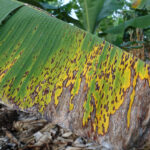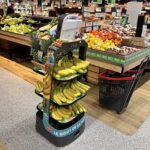The bigger picture of Trader Joe’s banana price increase

The 19-cent banana, long a facet at U.S. supermarket Trader Joe’s, is a thing of the past. The company announced customers will now pay 23 cents per banana.
Trader Joe’s, known for its wide array of unique products and comparably low market prices, told FreshFruitPortal.com by email that the decision to increase the price by almost 20% was made because of cost changes.
“We only change our prices when our costs change,” the spokesperson said.
The story of why bananas at Trader Joe’s had a consistent price tag of $0.19 was told by former CEO Dan Bane on an episode of the podcast “Inside Trader Joe’s” back in 2018.
Twenty years ago, the store sold bananas by the pound. One day when Bane came upon a customer, “a nice lady,” he said.
“I asked her, ‘Ma’am, if you don’t mind me asking, I saw you looking at the bananas but you didn’t … put anything in your cart.’ And she says to me, ‘Sonny, I may not live to that fourth banana,’” Bane recalled.
He said from that day on, they started selling bananas individually, at 19 cents.
The break this week from that long-standing price comes down to inflation, of which bananas are the latest victim.
USDA data shows Americans spend more of their income on food than they have in 30 years.
CBS MoneyWatch reported that by the end of 2023, consumers were paying nearly 20% more for the same groceries as they were in 2021.
US banana market
The U.S. sources over 41% of its bananas from Guatemala, as well as Costa Rica and Ecuador.
Combined, the three countries export over 7.4 billion pounds of bananas to the U.S. on average every year. Bananas are the most consumed fruit in the country by volume per capita, alongside apples. They are also one of the country's highest-valued fresh import categories at $2.27 billion, according to USDA data.
While Trader Joe’s did not specify the cost pressures that led to the price shift, the global banana industry is facing increased production costs, labor shortages, and other issues in exporting countries.
Producers also face the pressures of climate change and increasing concerns from pests and diseases like the TR4 strain of Panama Disease, impacting Cavendish crops in Latin America, Asia, and Africa.
Providing living wages to banana workers also remains a priority issue for the United Nations World Banana Forum.
“The WBF recognizes that the cost associated with living wage implementation has to be shared with all actors along the supply chain through long-term fair pricing and that good faith social dialogue is key to the realization of this objective,” the organization has said.
Worker wages and gender equity were leading topics at this year’s World Banana Forum conference in Rome.
Additionally, there’s growing concern from authorities, especially in Europe, due to reiterated shipments of bananas from Ecuador and Colombia loaded with cocaine.
The use of banana trade by drug dealers in Latin America has caused the European Union to implement harsh, more strict security measures to monitor the shipments, putting more demands on exporters.
All these factors play into a complex reality for the global banana trade, forcing parties along the supply chain to reevaluate costs and practices.














































